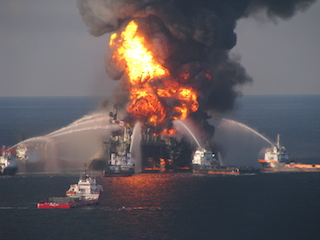Lessons learned from the aftermath of the Deepwater Horizon disaster have brought a more rigorous approach to safety across the offshore industry, and a growing relationship between the industry, academic scientists and government emergency managers, experts said at a U.S. Senate hearing Wednesday.
The Senate Committee on Commerce, Science and Transportation called witnesses at the request of Sen. Bill Nelson, D-Fla., the panel’s ranking Democratic member, who said he’s planning new legislation to “ensure that the National Oceanic and Atmospheric Administration and the Coast Guard have the tools to prepare for and respond to the next marine oil spill.”
Today, the risk of another Deepwater Horizon remains. Oil companies are exploring in deeper and deeper waters. Yet, we are not still adequately prepared for another oil spill. In fact, we are still trying to learn about the impacts of the Deepwater Horizon five years later,” Nelson said in an opening statement.
“After the Exxon Valdez oil spill, it took four years for the Pacific herring population in Prince William Sound to collapse. So what will be the long-term impacts of the Deepwater Horizon? And how do we make sure that the lessons from our past inform our future?” Nelson said.
“In the five years since the Macondo incident, the oil and natural gas industry has methodically examined every aspect of offshore safety measures and operations to identify potential improvements in safety management,” Charlie Williams II, executive director of the industry’s Center for Offshore Safety, committee members. “COS was established by the industry to ensure that this continues and is effective, that there is a single group exclusively focused on SEMS (safety and environmental management systems), and that there is a group responsive to supporting a culture of safety.”
Williams said those systems drive three overarching benefits now:
- “Shifts execution and oversight strategy from a prescriptive rule based approach to one that is proactive and performance-based.”
- “Manages safety with the same principles of planning, organization, implementation, and controls that we expect from other business functions.”
- “Drives both process and personal accountability up and down the organizational structure.”
Samantha Joye, a professor of marine science at the University of Georgia and leader of a scientific consortium studying the spill effects, gave a detailed summary of their findings. Effects on the deep sea floor life were extreme, and its future uncertain, Joye said.
“Benthic invertebrate communities, especially within a 5-10 mile radius of the wellhead, were wiped out. How long it will take them to recover is unknown. Likewise, damaged coral communities have been documented tens of miles from the wellhead,” Joye said in written testimony.
“These communities are still showing impact and though we know it will require hundreds of years for the most damaged coral communities to recover, we are still documenting impacts that were not documented in 2012 and it is likely that the true magnitude of the deep sea impact may never be fully appreciated,” she said.
Joye and other scientists stressed how Deepwater Horizon led to closer cooperation between them and other players, and continues to show the need for research and pre-planning so science is incorporated in emergency planning.
“The unprecedented Deepwater Horizon disaster created an unprecedented intersection of stakeholders,” said Christopher Reddy, a senior scientist and marine pollution expert at the Wood Holes Oceanographic Institute in Massachusetts, who advised the Deepwater Horizon unified command operation in New Orleans during the spill. “A silver lining to the DWH disaster is that it compelled previously disparate cultures to introduce themselves and join forces.”
Reddy said one joint project that’s growing comes directly out of those experiences.
“The proposed solution, called the Science Action Network, will be a network of academic and professional scientists that are linked to regional government planning and response bodies— such as Regional Response Teams — to coordinate and streamline scientific input for decision- making,” he said.




